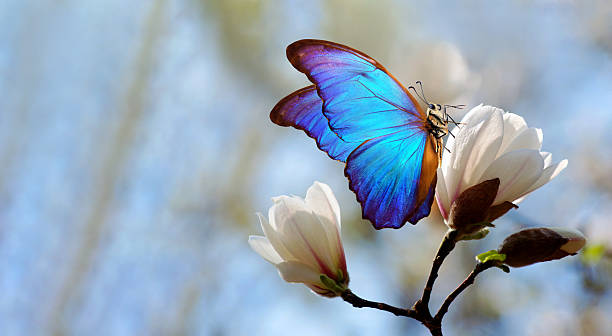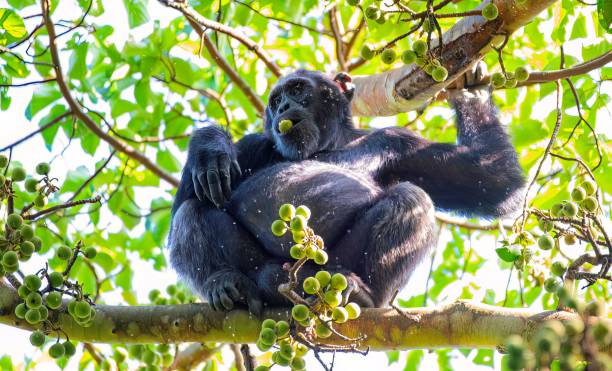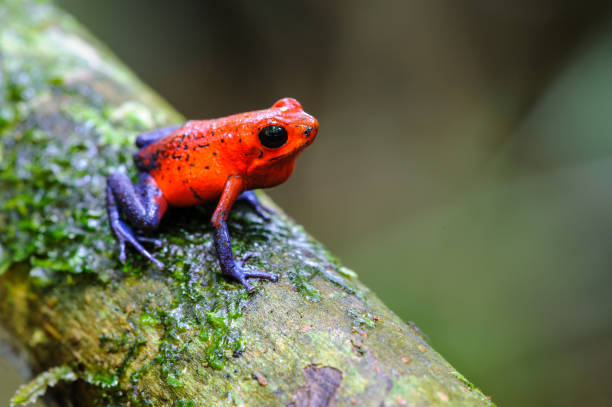Among all the wonders of the natural world, few are as mesmerizing, mysterious, and scientifically fascinating as the metamorphosis of butterflies. From a tiny egg to a crawling caterpillar, then to a motionless chrysalis, and finally into a vibrant, fluttering butterfly—this transformation is one of nature’s most extraordinary processes. It is a biological masterpiece, a symbol of rebirth and change, and a marvel that continues to inspire scientists, artists, and thinkers alike.
Metamorphosis, in biological terms, is a process of profound physical transformation. For butterflies, it involves a complete restructuring of their bodies, where every tissue, organ, and structure changes form and function. What begins as a soft-bodied larva, designed to eat and grow, ends as a delicate, winged adult whose purpose is to reproduce and ensure the survival of its species.
To fully understand this miracle of life, one must delve into every stage of the butterfly’s existence—from the moment an egg is laid to the final, graceful flight of the adult. Each stage reveals a remarkable story of adaptation, evolution, and survival, shaped over millions of years of natural selection.
The Life Cycle of a Butterfly
The life of a butterfly is divided into four distinct stages: egg, larva (caterpillar), pupa (chrysalis), and adult (butterfly). This process, known as complete metamorphosis, or holometabolism, is a complex biological phenomenon shared by all members of the insect order Lepidoptera, which includes both butterflies and moths. Each stage is a separate life form in itself, with its own unique anatomy, behavior, and ecological role.
The key to understanding butterfly metamorphosis lies in the fact that the larva and the adult occupy completely different ecological niches. The caterpillar is a voracious eater, consuming leaves and storing energy, while the butterfly is a pollinator, sipping nectar and focusing on reproduction. This division of labor between life stages reduces competition for resources and increases survival efficiency—a major evolutionary advantage.
The Beginning: The Butterfly Egg
Every butterfly’s life begins as a tiny egg, often no larger than the head of a pin. These eggs are laid by the female butterfly on specific host plants, chosen with precision. Each butterfly species has evolved to recognize certain plants that will later provide nourishment for its caterpillars. Monarch butterflies, for example, lay their eggs exclusively on milkweed plants because the larvae depend on the toxic chemicals in milkweed for protection against predators.
The structure of a butterfly egg is intricate. It is usually spherical or oval, with a hard outer shell called the chorion, which protects the developing embryo. Beneath this shell lies a thin membrane that regulates gas exchange, allowing oxygen in while preventing excessive water loss.
Inside the egg, embryonic development begins within hours of being laid. The embryo forms the rudimentary tissues of the future caterpillar, and in a few days—depending on temperature, humidity, and species—the egg hatches. The tiny caterpillar, or larva, emerges by chewing its way through the shell, often consuming the remnants of the egg as its first meal.
The Caterpillar: A Machine of Growth
The caterpillar stage is the most active period of growth in a butterfly’s life. In this stage, the organism is focused almost entirely on eating and storing energy. What begins as a fragile hatchling soon becomes a powerful eating machine, capable of doubling its size many times over in just a few days.
Caterpillars feed voraciously on the leaves of their host plant, and their digestive systems are perfectly adapted for this task. Their mouthparts are designed for chewing tough vegetation, and their saliva contains enzymes that break down plant tissues efficiently. The nutrients absorbed are converted into fats and proteins that will later fuel metamorphosis.
As caterpillars grow, their outer skin, or cuticle, does not stretch. Instead, they must shed it through a process called molting. Each molt marks a new stage known as an instar. Most caterpillars pass through five instars, although some species may have more or fewer. During each molt, not only does the caterpillar increase in size, but its coloration and patterns may change as well—often providing camouflage or warning signals to predators.
Inside the caterpillar’s body, fascinating cellular processes are already setting the stage for its transformation. Tiny clusters of cells known as imaginal discs remain dormant during larval life. These discs will later develop into adult structures such as wings, legs, antennae, and eyes. Even as the caterpillar devours leaves, the blueprint for its future butterfly form is already hidden within.
Caterpillars also exhibit complex defensive behaviors. Some species, like the monarch, acquire toxic chemicals from their host plants, making them distasteful or poisonous to predators. Others use camouflage, mimicking twigs or bird droppings to avoid detection. Certain caterpillars have spines, hairs, or bright coloration that signal danger. These adaptations increase their chances of surviving long enough to reach the next stage.
The Transition: From Caterpillar to Chrysalis
When a caterpillar has reached full size, it stops eating and begins searching for a safe place to pupate. It may crawl away from its host plant, attach itself to a leaf or branch, and spin a silk pad from which it will hang. This marks the beginning of one of nature’s most astonishing transformations—the formation of the chrysalis.
Before entering the pupal stage, the caterpillar sheds its skin one final time. Beneath the last larval cuticle lies a hardened casing—the chrysalis—that encases the body completely. From the outside, it appears as if the caterpillar has merely sealed itself away to rest, but inside, a process of complete biological reconstruction is underway.
Within the chrysalis, the caterpillar’s tissues undergo histolysis, a process of controlled self-digestion. Most of the larval cells break down into a nutrient-rich soup, while the imaginal discs and certain other groups of cells survive. These surviving cells then use the available nutrients to construct entirely new tissues and organs. The caterpillar’s body is reorganized into that of an adult butterfly—complete with wings, compound eyes, proboscis, and reproductive organs.
This metamorphosis is guided by complex hormonal changes. The key hormones involved are ecdysone, which triggers molting, and juvenile hormone, which controls the nature of the molt. When juvenile hormone levels drop, ecdysone induces pupation instead of another larval molt. Later, another surge of ecdysone signals the development of adult structures within the chrysalis.
Inside this silent shell, metamorphosis is a symphony of genetic and biochemical activity. DNA sequences are activated and silenced, proteins are synthesized, and cellular differentiation occurs on a massive scale. The transformation that takes place within the chrysalis is one of the most remarkable examples of biological reprogramming known to science.
The Emergence: The Birth of a Butterfly
After days or weeks of transformation—depending on species and environmental conditions—the adult butterfly is ready to emerge. Inside the chrysalis, the butterfly completes its development, and the outer shell begins to darken and become transparent. Finally, the butterfly breaks free.
The newly emerged adult, known as an imago, is initially soft and fragile. Its wings are crumpled, its body heavy with fluid. The butterfly must immediately begin the process of expanding its wings. It pumps a fluid called hemolymph through its wing veins, inflating them like balloons. Within minutes, the wings expand to their full size, and the butterfly rests while they harden and dry.
This moment—when a fully formed butterfly spreads its wings for the first time—is one of nature’s most breathtaking sights. In that instant, a crawling caterpillar has become a flying jewel, ready to explore a new world.
The adult butterfly’s anatomy is now completely different from the larva’s. Its mouthparts are adapted for sipping nectar rather than chewing leaves, and its digestive system is simplified since it consumes liquid food. Its compound eyes provide a wide field of vision, allowing it to detect colors, motion, and ultraviolet patterns on flowers. Its antennae help it navigate and find mates through scent.
The Adult Stage: Life in Flight
The adult butterfly’s primary purpose is reproduction. While it may feed on nectar, its main biological goal is to mate and lay eggs to continue the cycle. Adult butterflies live anywhere from a few days to several months, depending on species, environmental conditions, and whether they migrate or enter periods of dormancy.
Butterflies are vital pollinators, visiting flowers in search of nectar and inadvertently transferring pollen between plants. Although not as efficient as bees, they play a crucial role in maintaining biodiversity and supporting ecosystems. Many plants have evolved colors and patterns that specifically attract butterflies, using ultraviolet markings that are invisible to humans but striking to a butterfly’s eye.
Courtship and mating behaviors among butterflies are highly sophisticated. Males often patrol territories or perform aerial displays to attract females. Chemical communication through pheromones also plays an important role. Once mating occurs, females lay eggs on host plants that will support the next generation of caterpillars, and the incredible cycle begins anew.
Some species, such as the monarch butterfly, add an additional layer of wonder to their adult lives: migration. Monarchs in North America undertake one of the most remarkable migrations of any insect, traveling thousands of kilometers from Canada and the United States to overwintering grounds in central Mexico. This journey, which spans multiple generations, demonstrates extraordinary navigational abilities guided by the position of the sun and the Earth’s magnetic field.
The Science Behind Metamorphosis
The metamorphosis of butterflies is not merely a visual wonder; it is a deeply complex biological process governed by genetics, hormones, and evolution. Scientists have long been fascinated by how a caterpillar can dissolve its body and reform into a butterfly with entirely new structures and abilities.
At the molecular level, metamorphosis involves the activation of specific genes that control cellular differentiation. The imaginal discs that existed in the caterpillar stage are clusters of undifferentiated cells—similar to stem cells—that hold the developmental blueprint of the adult butterfly. During pupation, these discs multiply and form adult structures such as wings and antennae.
Hormonal regulation plays a critical role. The interplay between ecdysone and juvenile hormone determines when metamorphosis occurs and what form it takes. When juvenile hormone levels are high, molting produces another larval stage. When they drop, pupation begins, setting the stage for adult development. This delicate balance ensures that the organism transitions at the proper time and under favorable conditions.
From an evolutionary perspective, complete metamorphosis offers significant advantages. By dividing life into distinct stages—each adapted to different environments and diets—butterflies minimize competition between young and adult forms. The larva and adult occupy separate ecological niches, allowing the species to exploit multiple food sources and habitats within the same ecosystem.
The Evolutionary Origins of Butterfly Metamorphosis
The evolution of complete metamorphosis remains one of biology’s greatest puzzles. Fossil evidence suggests that early insects did not undergo such transformations. Instead, their young resembled miniature adults, growing through gradual molts. The emergence of complete metamorphosis—seen in insects like butterflies, beetles, flies, and bees—appears to have evolved over 280 million years ago.
Scientists believe that metamorphosis may have originated from genetic and hormonal modifications in ancestral insects. By separating larval and adult development, these organisms could exploit different food resources and avoid competition with their own offspring. Over time, natural selection refined this process into the sophisticated system seen in modern butterflies.
Butterflies belong to the order Lepidoptera, meaning “scale-winged,” referring to the tiny scales that cover their wings and give them their colors. These scales are specialized flattened hairs that refract and reflect light, creating vivid hues through both pigments and structural coloration. This diversity of color and pattern has evolved for camouflage, mate attraction, and warning signals to predators.
The Role of Metamorphosis in Ecology
The metamorphosis of butterflies is not an isolated biological event—it is a vital part of ecological systems. Each stage interacts with the environment in unique ways. Caterpillars are herbivores that influence plant populations, while adult butterflies are pollinators that support flowering plants. Even the discarded chrysalis becomes part of the ecosystem, decomposing and returning nutrients to the soil.
Butterflies also serve as important indicators of environmental health. Because they are sensitive to temperature, habitat changes, and pollution, fluctuations in butterfly populations can signal broader ecological disturbances. Conservation biologists often monitor butterfly diversity as a measure of ecosystem stability.
In agricultural settings, butterfly larvae can sometimes be pests, consuming crops and leaves. However, their overall ecological contributions—particularly in pollination and food webs—far outweigh their negative impacts. Many animals, including birds, spiders, and reptiles, depend on butterflies and caterpillars as food sources, making them integral links in the chain of life.
Metamorphosis and Human Inspiration
Beyond its scientific importance, the metamorphosis of butterflies has captured human imagination for centuries. In art, literature, and spirituality, the butterfly symbolizes transformation, rebirth, and the beauty of change. From ancient Greek myths to modern scientific discoveries, it has been a universal metaphor for the human capacity to evolve.
Psychologically, the butterfly’s transformation mirrors human growth—the process of shedding old forms and emerging renewed. In many cultures, butterflies are seen as messengers of hope, symbols of the soul, or representations of the cycle of life and death.
In modern science and technology, the study of butterfly wings has inspired innovations in materials and optics. The microscopic structures that produce iridescent colors in butterfly scales have led to advances in photonic engineering, anti-counterfeit technologies, and even solar cell design. Nature’s artistry, refined through evolution, continues to guide human innovation.
Environmental Challenges and Conservation
Despite their resilience, butterflies face numerous threats in the modern world. Habitat destruction, pesticide use, pollution, and climate change are reducing butterfly populations worldwide. The loss of native host plants, such as milkweed for monarchs, has been particularly devastating.
Conservation efforts focus on restoring habitats, protecting migratory routes, and promoting sustainable agricultural practices. Gardens that include native flowering plants and avoid pesticides can provide vital sanctuaries for butterflies. Public awareness campaigns and scientific monitoring have also played essential roles in protecting endangered species.
The survival of butterflies is not merely an aesthetic concern. Their decline signals disruptions in ecosystems that sustain countless other species, including humans. Protecting butterflies means preserving biodiversity, pollination networks, and the natural balance of life on Earth.
The Mystery and Majesty of Metamorphosis
The metamorphosis of butterflies remains one of the most extraordinary processes in biology—a transformation so profound that it borders on the miraculous. Within a sealed chrysalis, a creature dissolves and re-forms into something completely different, guided by ancient genetic codes and evolutionary wisdom.
Science has explained the mechanics of this process, yet the wonder it evokes remains timeless. It is a reminder that life is not static but dynamic, ever-changing, and endlessly inventive. The butterfly’s metamorphosis teaches us that transformation—whether biological or personal—is a natural and necessary part of existence.
From egg to caterpillar, from chrysalis to butterfly, this journey is one of the most elegant narratives in nature. It reveals the creative power of evolution and the delicate interconnections that sustain life. To witness a butterfly emerge from its chrysalis is to see nature’s greatest metaphor made real—the triumph of change, the beauty of impermanence, and the enduring mystery of life itself.






